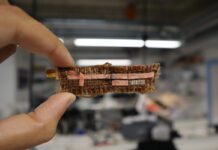
A report by the United Nations University has warned that global e-waste will reach 50m tonnes by 2018. The UK is listed in the top five per capita waste electrical and electronic equipment (WEEE) producers. Dr Philip Morton, CEO of REPIC, WEEE Forum President and director of WEEE Europe, shares his thoughts on the findings.
The UK is a mature and wealthy economy, which means consumers buy a lot of new electrical equipment. Buying new often leads to displacement of the old, so UK per capita WEEE is certain to be among the highest. It is therefore important to have the infrastructure in place to deal with discarded products in the most efficient, environmentally sound and sustainable way. As such, it is necessary to reuse old electrical equipment (WEEE) wherever practically possible. Or where it can’t be, it needs capturing to be properly treated, recycled and the secondary materials recovered for manufacturing new items.
The report from the United Nations University quite correctly highlighted the UK as a major generator of WEEE. However, far from being negative, the report is a very positive statement. The report shows that the UK is capturing and counting significantly more of the WEEE that it creates in the system than many other EU states that generate similar amounts of WEEE per capita.
Capturing more WEEE not only helps the environment, employment, and economy, it also demonstrates ethical behaviour in trying to minimise or ideally, entirely prevent the illegal export of WEEE to developing countries. In summary, a high tonnage captured, reported and properly reused or recycled through all channels is good news for everyone.
Official and unofficial channels
The more WEEE that is captured, treated properly and counted, the better a country performs. It means less is landfilled or illegally exported, and critical raw materials can be recovered and recycled. The environment too is better protected, and fewer people in developing countries are exposed to unnecessary risk from poor processes and environmentally unsound recovery practices.
In Europe, there is an ever increasing concern at the often illegal practice of exporting used electrical goods to West African or Asian countries to save costs for recycling. As such, only about a third of European WEEE is captured in official channels, equating to 6 million tonnes or more of WEEE that is not currently being properly, counted, treated and reported.
Illegal exports of WEEE (which is different to working used EEE) present environmental problems for the recipient countries as it cannot be reused and the recycling facilities are often unregulated. Improper processing techniques can result in environmental pollution, negative health effects and the loss of valuable resources.
Unlikely asset
Even where WEEE is collected and treated in a responsible way according to best practice, Europe doesn’t yet maximise the recovery of critical raw materials from WEEE. In fact, estimates show that the recovery rate is less than 1%, with a recovery rate for precious metals less than 15%. The European recycling industry is understandably focused on recycling high volume materials such as steel, plastics, aluminium and copper.
The industry needs new technologies and better collection and sorting activity to enable the sustainable capture of trace materials. Europe relies heavily on countries such as China for precious or rare metals. However, the Chinese economy creates internal demand for minerals and precious metals that is growing. Growth is variable – internal demand will be satisfied first, so supply to Europe is more volatile than many would like. It is therefore sensible to look at resource efficiency and sustainability within Europe, as well as a way to extract and recycle as many of these materials as possible, particularly as it makes environmental and economic sense.
The recast WEEE Directive
First introduced at the end of 2006 with collections beginning in mid-2007, the aim of the original WEEE Regulations was to reduce the amount of electrical and electronic goods going to landfill and improve recovery and recycling rates of these products.
However, the system encountered various problems as a result of inherent flaws in these original regulations. In particular, the origin and treatment of WEEE was neither clear nor auditable for the stakeholders involved. This, coupled with the “must buy” market for WEEE evidence unfortunately created a distorted marketplace where WEEE evidence notes were excessively traded at prices that were often not reflective of the true costs that producers should pay.
The new, improved recast WEEE Directive, which was transposed into UK law in December 2013, taking effect from January 1st 2014, recognised the importance of capturing, counting and properly treating WEEE from all sources. The new, higher collection and recovery targets were defined in the Directive and a clause was included to enable member states to make use of ‘substantiated estimates for WEEE’. This is WEEE that is collected and treated but not necessarily currently ‘officially’ recorded.
As a result of some key changes in the UK Regulations introduced by BIS, there is now a much clearer audit trail for WEEE in the UK. The new WEEE regulations were designed to create a fairer, more transparent arena for recycling WEEE. Being able to efficiently audit WEEE treatment has created an environment where those financing WEEE collection and treatment can start to influence the quality of WEEE treatment. And the elimination of evidence trading has, according to BIS figures, allowed for a price correction with costs reduced closer to what it refers to as ‘the true cost of compliance’.
Since adopting the new WEEE regulations, the visibility of the WEEE treatment route has improved for everyone involved. Each producer compliance scheme now knows who their suppliers and treatment partners are (and vice versa), and both parties have benefited from having an improved influence over the quality of treatment. Following a year under the new regulations, it has become increasingly clear that a combination of these changes have helped to start rebalancing the system.
Meeting targets
The 2015 UK target set by BIS, for producers through their schemes, is just over 500,000 tonnes. However, this target doesn’t represent the full picture – it only shows one route through which WEEE is recycled. There are others, such as non-obligated WEEE, which is dealt with directly by ends users and not classed as producer responsible, as well as WEEE that is collected and treated in the multi-million tonne scrap metal market. Moving forward, it will be important to count all acceptable routes, if the UK is to meet the increasing target for WEEE collection.
According to 2014 WRAP figures gained from an extensive sampling study, there is a 95% level of certainty that between 381,000 and 597,000 tonnes of large household appliances (Category 1 WEEE) is present in the general scrap metal stream. The study by WRAP highlights many WEEE channels, making it a more accurate representation of WEEE flows.
New increasing targets are on the horizon, and from 2016, the target becomes 45% relative to EEE put on the market. From 2019, the WEEE target is planned to be 65% of EEE put on the market, or 85% of WEEE generated (according to recent methodology being developed by the European Commission). With targets such as these in place, counting WEEE collection through all acceptable channels, is looking more necessary than ever.






